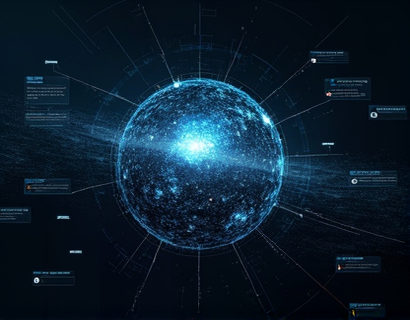Maximize Your Multi-Channel Announcements: A Strategic Guide for Businesses and Audiences
In today's fast-paced digital landscape, businesses and individuals face the challenge of effectively communicating with their audience across multiple channels. The ability to make impactful announcements that reach and engage diverse audiences is crucial for success. This guide provides expert strategies to streamline your multi-channel announcement process, ensuring your messages are seen and heard by as many people as possible. By optimizing your communication strategy, you can enhance audience connection and drive meaningful interactions.
Understanding Multi-Channel Communication
Multi-channel communication involves using various platforms and channels to reach your audience. This approach allows you to maximize your message's visibility and impact. Each channel has its unique characteristics and audience demographics, making it essential to tailor your announcements accordingly. Common channels include social media platforms, email newsletters, company websites, blogs, and messaging apps. Understanding the strengths and limitations of each channel is the first step in creating an effective multi-channel strategy.
Setting Clear Objectives
Before diving into the announcement process, define clear objectives. What do you aim to achieve with your announcements? Are you looking to increase brand awareness, drive sales, or engage with your community? Setting specific, measurable goals will guide your strategy and help you evaluate the success of your efforts. For instance, if your goal is to boost sales, your announcements should focus on promotions, discounts, and new product launches.
Know Your Audience
Understanding your audience is key to crafting effective announcements. Conduct research to gather insights into their preferences, behaviors, and pain points. Segment your audience based on demographics, interests, and engagement levels. This allows you to create targeted messages that resonate with each group. Personalization goes beyond just addressing the audience by name; it involves tailoring the content, tone, and timing of your announcements to meet their specific needs and expectations.
Crafting Compelling Announcements
The content of your announcements plays a critical role in capturing and maintaining audience attention. Start with a strong headline that clearly communicates the main point of your message. Use concise and engaging language to convey your key points. Include a clear call-to-action (CTA) that tells the audience what you want them to do next, whether it's visiting your website, signing up for a newsletter, or sharing the announcement on their social media.
Visuals are also essential in making your announcements stand out. Use high-quality images, infographics, or videos to complement your text and enhance the overall appeal. Ensure that all visual elements are optimized for different devices and platforms to maintain consistency and quality across channels.
Choosing the Right Channels
Selecting the appropriate channels for your announcements is crucial for maximizing reach and engagement. Consider the following factors when choosing your channels:
- Audience presence: Focus on platforms where your target audience is most active.
- Content format: Match the content type to the platform's strengths. For example, use Instagram for visual content and LinkedIn for professional updates.
- Timing: Post at times when your audience is most likely to be online and engaged.
- Frequency: Balance consistency with avoiding overload. Too many announcements can lead to audience fatigue.
Experiment with different channels to see which ones yield the best results for your specific audience and objectives. Continuously monitor and adjust your strategy based on performance data.
Leveraging Automation Tools
Managing multi-channel announcements can be time-consuming and complex. Automation tools can significantly streamline the process, saving you time and reducing errors. These tools allow you to schedule announcements across multiple platforms, track engagement metrics, and analyze performance data. Some popular options include Hootsuite, Buffer, and Sprout Social. When selecting an automation tool, consider features such as ease of use, integration capabilities, and customer support.
Automation does not mean a one-size-fits-all approach. Customize your automated posts to align with each channel's unique format and audience preferences. For instance, a tweet might be more concise than a Facebook post, and an Instagram caption could include hashtags to increase discoverability.
Engaging with Your Audience
Announcements are not just about broadcasting information; they are an opportunity to engage with your audience. Encourage interactions by asking questions, requesting feedback, or hosting live Q&A sessions. Respond promptly to comments and messages to build a sense of community and trust. Engagement metrics, such as likes, shares, and comments, are valuable indicators of your announcement's effectiveness.
Monitoring and responding to audience feedback also provides insights into their needs and preferences, helping you refine your future announcements. Positive interactions can be amplified by sharing user-generated content or featuring customer testimonials, further enhancing engagement and credibility.
Analyzing and Optimizing Performance
To continuously improve your multi-channel announcement strategy, it's essential to analyze performance data regularly. Most automation tools and platform analytics provide detailed insights into engagement rates, reach, and conversion metrics. Identify which channels and content types perform best and adjust your strategy accordingly.
Set up key performance indicators (KPIs) to measure the success of your announcements. Common KPIs include click-through rates, conversion rates, and audience growth. Use A/B testing to experiment with different headlines, visuals, and CTAs to determine what resonates best with your audience. Data-driven decisions will help you optimize your announcements for maximum impact.
Creating a Content Calendar
A content calendar is a powerful tool for organizing and scheduling your multi-channel announcements. It helps ensure consistency and alignment with your overall marketing strategy. Start by outlining the key messages and themes for each channel over a specific period, such as a month or quarter. Allocate specific days and times for posting based on your audience's preferences and platform algorithms.
Include space for tracking progress, noting any changes, and adding new ideas. A well-structured content calendar not only streamlines your workflow but also helps maintain a cohesive brand voice across all channels. Regularly review and update your calendar to reflect new opportunities and insights.
Building a Cohesive Brand Message
Consistency in messaging is vital for building brand recognition and trust. Ensure that all your announcements align with your brand's core values, mission, and tone. Develop a brand style guide that outlines the language, visual elements, and tone of voice to use across all channels. This guide will serve as a reference for your team and any external partners involved in creating and distributing your announcements.
Cross-promotion can also enhance the cohesiveness of your message. Share your announcements on multiple channels, but tailor the content to fit each platform's format and audience. For example, a LinkedIn post might focus on industry insights, while a Facebook announcement could highlight a community event.
Handling Crises and Negative Feedback
In today's digital age, a single misstep can quickly escalate into a crisis. Having a crisis management plan in place is essential for protecting your brand's reputation. When dealing with negative feedback or a public relations issue, respond promptly and transparently. Acknowledge the concern, provide a clear explanation, and outline the steps being taken to address the problem.
Use multi-channel announcements to communicate your response and reassure your audience of your commitment to quality and customer satisfaction. Monitor the situation closely and be prepared to make further adjustments as needed. Proactive and empathetic communication can turn a negative experience into an opportunity to demonstrate your brand's values and dedication.
Conclusion
Maximizing your multi-channel announcements requires a strategic approach that combines clear objectives, audience insights, compelling content, and effective channel selection. By leveraging automation tools, engaging with your audience, and continuously optimizing your strategy, you can enhance message visibility and build stronger connections with your audience. Remember, the goal is not just to announce but to engage and inspire action. With the right strategies and tools, you can transform your multi-channel communication into a powerful asset for your business or personal brand.










































